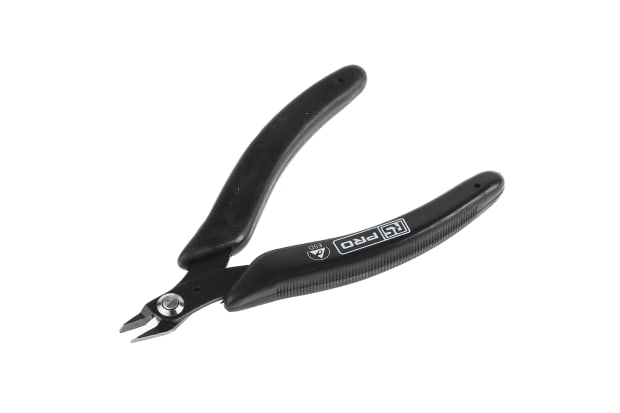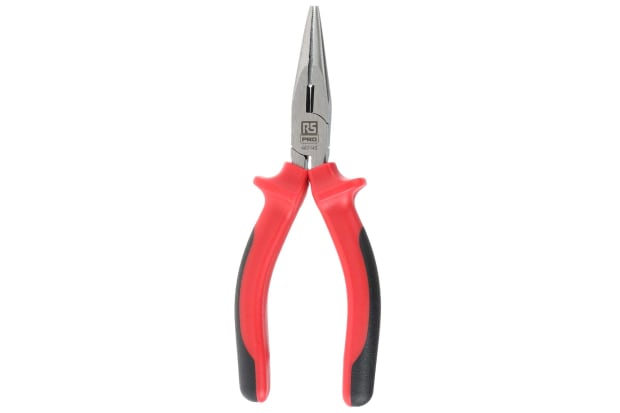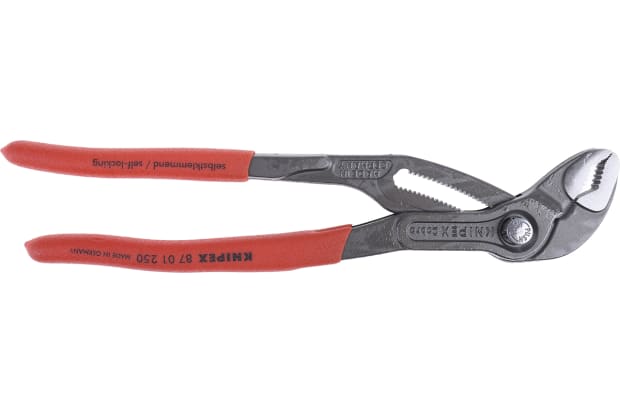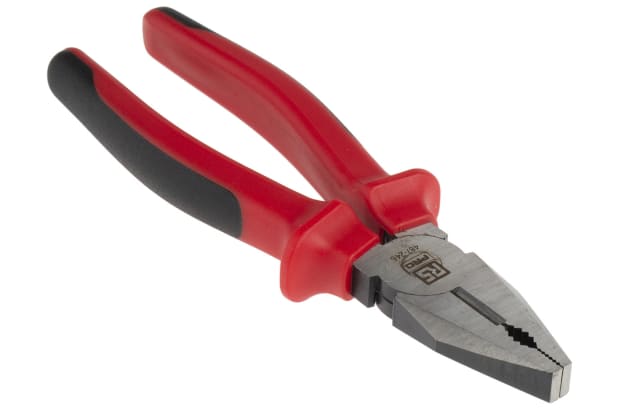- Published 8 Mar 2023
- Last Modified 24 Apr 2024
- 8 min
A Complete Guide to Pliers
From circlip to long-nose pliers, our buying & user guide will help you choose the best pliers for the job.

What are Pliers For?
Pliers are among the most basic and familiar handheld tools. Pliers are versatile tools used for gripping, twisting, pulling, or shearing objects, making them essential for building, maintenance, engineering, or repair tasks. They provide a firm grip and rotational force, making tasks like attaching or detaching small components or cables easy. Diagonal pliers, also known as wire cutters, are specifically designed for cutting metal wirings, such as steel, copper, or aluminium. Simply squeeze the handles to grip the object, and leverage amplifies the pressure exerted by the user, though specialised pliers may require specific techniques.
Plier design
Whilst specific types of pliers have slightly different designs to make them more suitable for different tasks, the main components of this hand tool stay the same. All of the key parts can be seen in the labelled diagram of combination pliers below.

Parts of pliers
- Handles
- Pivot point
- Jaws
- Cutters
- Pipe grip
- Tip
What are pliers best used for?
Pliers allow the user to grip an object much more firmly than they otherwise would be able to and apply ‘torque’ – rotational force - making them ideal for any building, maintenance, engineering or repair task that requires gripping, twisting, pulling or shearing.
Typical uses include attaching or detaching small components or cables – for example nuts from bolts or TV aerials from their plugs. Diagonal pliers are specifically designed for cutting metal wiring – for example steel, copper or aluminium: hence the alternative name ‘wire cutters’.
Fundamentally, pliers are simple tools: squeeze on the handles to grip the target object between the clamps, leverage amplifies the pressure exerted by the user. Very specialist pliers may require additional refinements to your technique.
Different plier types
Pliers are available in a surprising number of varying designs for many different tasks. The following are some of the most common types you will come across:
Circlip pliers
Circlip pliers are designed specifically for installing or removing circlips, circular metal clips used to secure rotating bearings and components on pipes, shafts, or housing in appliances like washing machines, bicycles, and food blenders. They have long, thin clamps with tips for circlip grip holes, ensuring compatibility with different sizes. Some models are reversible or convertible, suitable for both internal and external circlips, while others feature interchangeable tips for versatility and easy replacement. Also known as retaining rings or snap ring pliers, they offer efficient circlip adjustment.
Combination pliers
**Combination pliers **combine wire cutting and insulation stripping with serrated jaws, allowing users to bend, twist and compress. Some models add additional functions or extended leverage.
Typically, the gripping jaws in combination pliers have a circular indentation to facilitate the user’s hold on the target object. The flexibility of combination pliers ensures wide usage, both by professional technicians and amateur DIY enthusiasts.
Cutters
**Cutters **are pliers primarily designed for cutting materials. Diagonal cutters are versatile and used for gripping and splicing wires, stripping insulation, and removing nails. They are also called side or wire cutters. End cutters, also known as nippers, focus on clean slicing and can cut solid objects like bolts and nails. Bolt cutters provide substantial cutting power to break open metal locks, while **wire rope cutters **are designed to slice without causing the material to fan out.
Flat nose pliers
**Flat nose pliers **are used for reshaping wire, either straightening or bending it, as well as attaching ‘crimp beads’. Such beads are used to hold attachments in place – ‘crimping’ means attachment via compression. Flat nose pliers are widely used by jewellers.
Locking pliers
Locking pliers are essential for tasks requiring a secure grip, such as metalwork or welding. They employ a bolt and lever mechanism to lock the clamps firmly in place, providing stability during work. Available in various sizes and configurations, they are known as Vise-Grips in the United States and Mole Wrenches in the UK.
Needle nose pliers
Needle nose pliers favoured by electricians and engineers, are essential for manipulating wires in tight spaces like electrical boxes. Craftsmen and jewellery designers find them handy for intricate tasks, thanks to their elongated jaws that offer flexibility and access to small objects. They are also known as long nose pliers, long nose pliers, pinch nose pliers, **snipe nose pliers **and bent nose pliers.
Pincers
Pincers feature rounded jaws that apply force and grip materials, making them versatile for pinching, twisting, or cutting wire, including tough materials like steel. They are also handy for pulling tasks like removing nails from wood. Widely used in engineering, construction, and DIY, pincers come in various sizes and designs, including models with soft grips for user comfort.
Key types include:
- The concreter: these provide strong twisting and cutting power and have hardened edges.
- The carpenter: for cleanly removing nails and similar objects.
- High leverage pincers: with long handles for a stronger grip and a rounded head, these are ideal for removing nails from tough settings.
Slip joint pliers
Slip joint pliers feature movable pivots that can be adjusted along the device to increase jaw opening distance. Channel pliers operate similarly but use a sliding mechanism for jaw adjustment. Straight slip joint pliers have aligned jaws and handles, while tongue-and-groove, or ‘water pump’ pliers, have offset jaws. Commonly used by plumbers, electricians, and mechanics, water pump pliers have serrated jaws set at a 45 to 60-degree angle from the handles. They are also known as arc joint pliers and pipe spanners.
Wire twisting pliers
These are the ideal choice for precise wire work in environments prone to vibration, such as vehicle or aeroplane engines. Wire twisting pliers allow users to quickly cut and twist different lengths into durable strands in small spaces.
Product Spotlight - RS PRO 3 Piece Plier Set
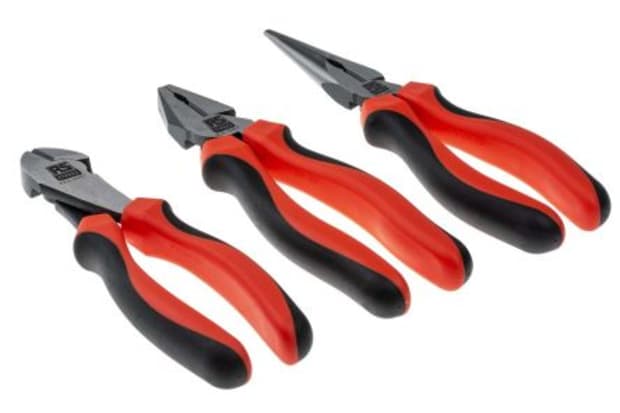
Plier sets are available that contain multiple types and designs of pliers which are excellent to have as part of a tool kit - so that you are prepared to handle any task. The RS PRO 3 piece steel plier set consists of three high-quality pieces of popular plier types including combination pliers, heavy-duty side cutters and long nose pliers. The steel pliers have double injection handles which offer a soft grip, helping to ensure smooth and precise operation while easing user fatigue over prolonged use. The pliers have induction-hardened serrated jaws which allows for an excellent grip on the subject, for total confidence. The set is kept within a pouch for easy storage and transportation.
Kit Contains:
- 180 mm Hi-Leverage Combination Pliers
- 160 mm Heavy Duty Side Cutters
- 200 mm Long Nose Pliers
Popular in the pliers category
How to change Circlip plier tips
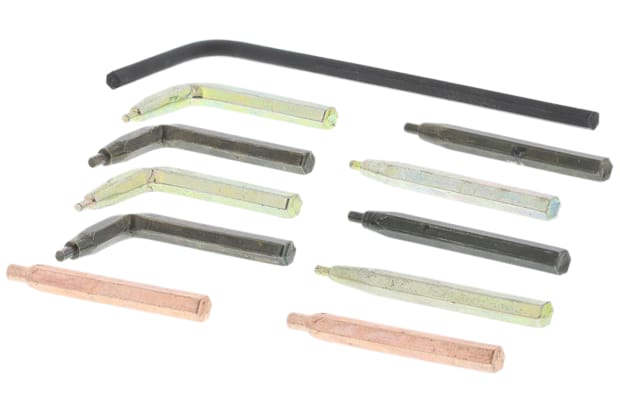
How to change circlip plier tips:
- Remove the tips currently in place. These will be attached to the head with one or two screws.
- To remove the screws use a small screwdriver, hex key or any special tool supplied with the pliers.
- Select the required replacement head, depending on the type and size of circlip you wish to adjust.
- Insert the new tips and reapply the screws.
